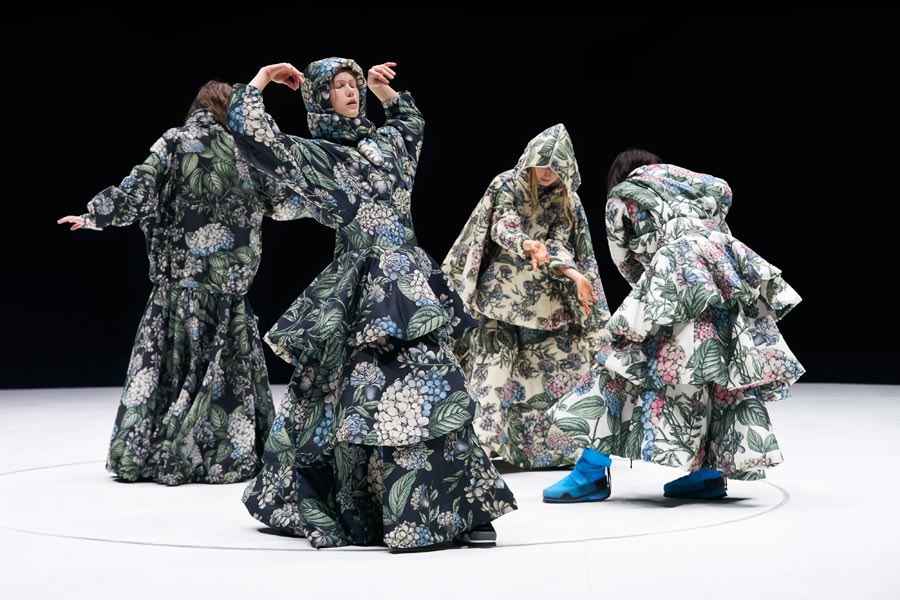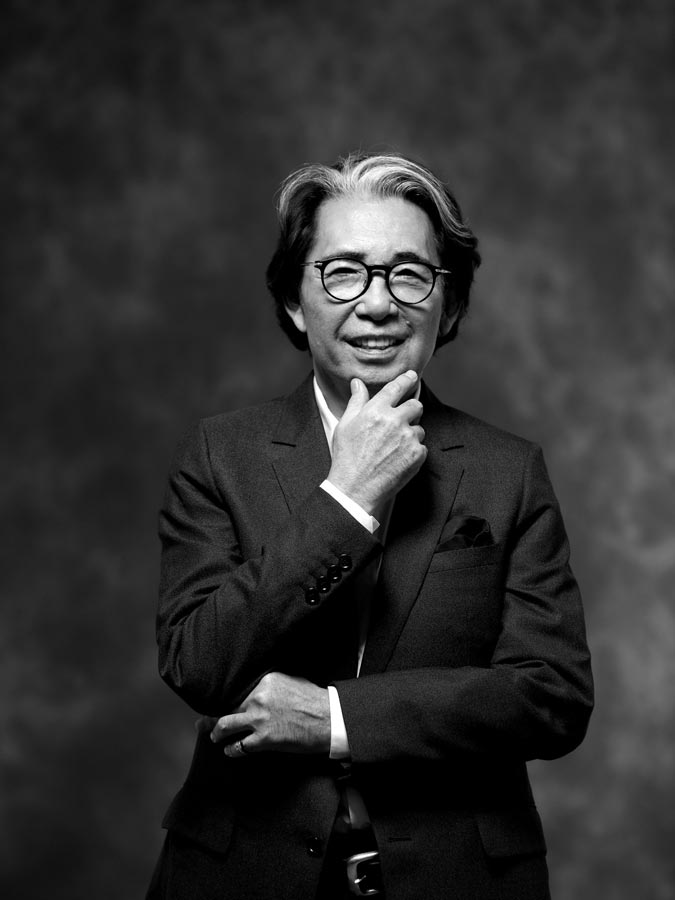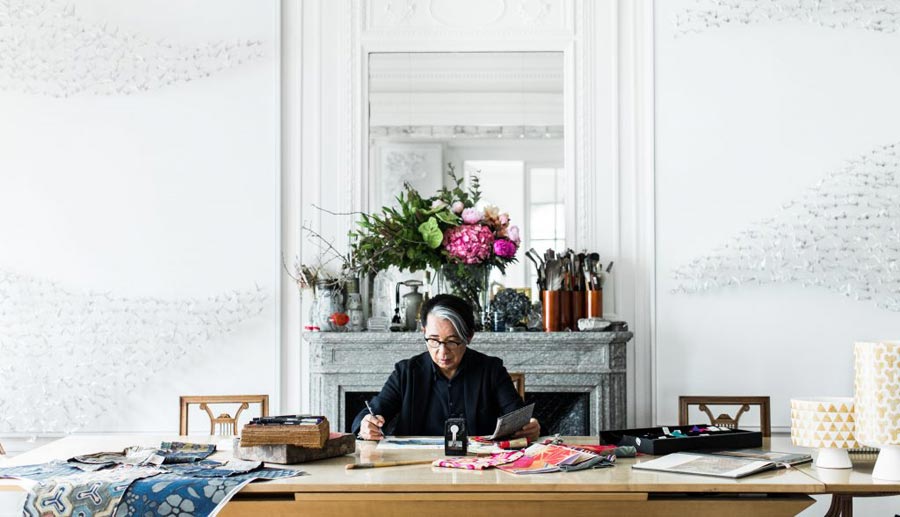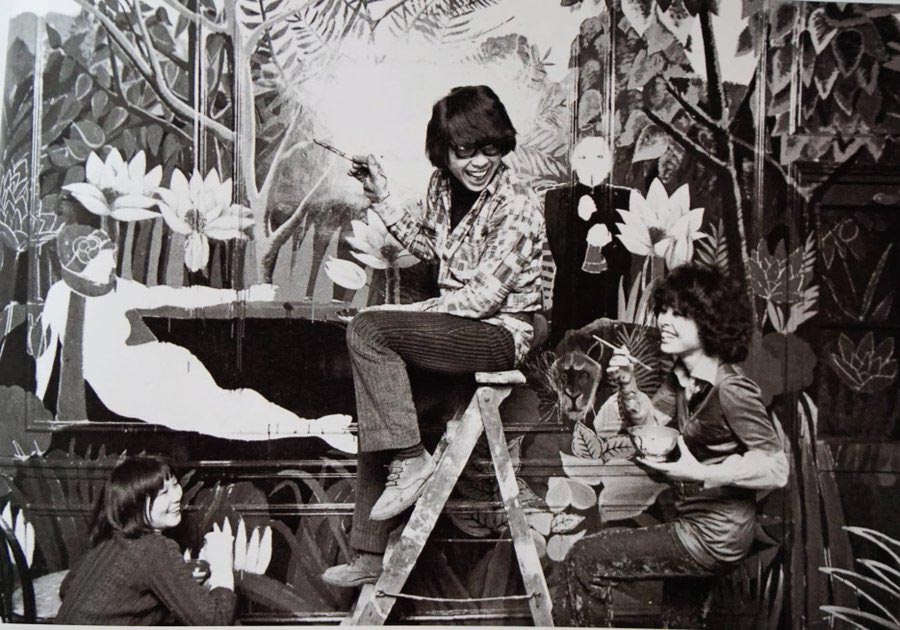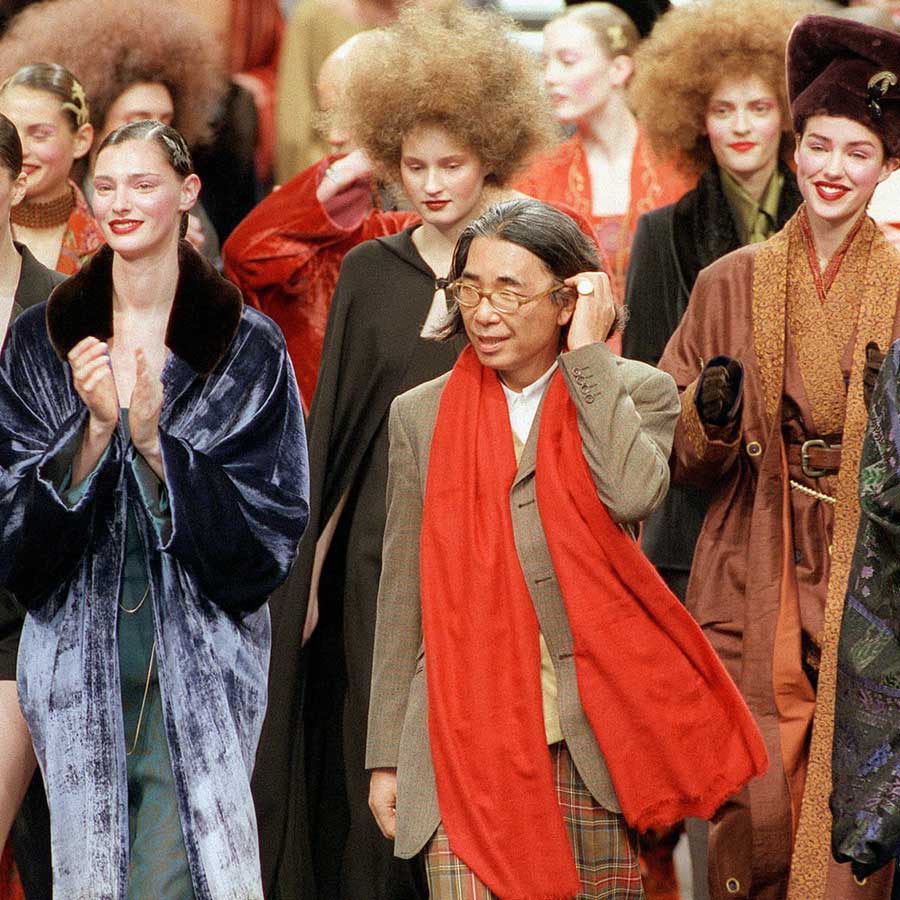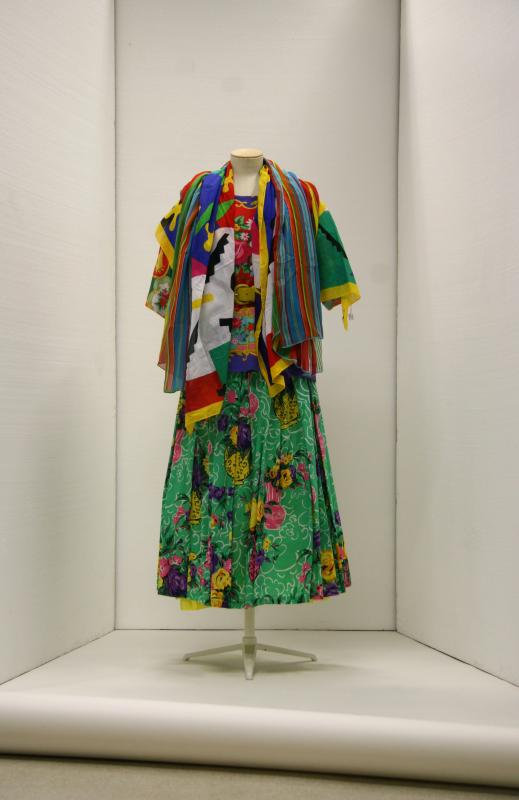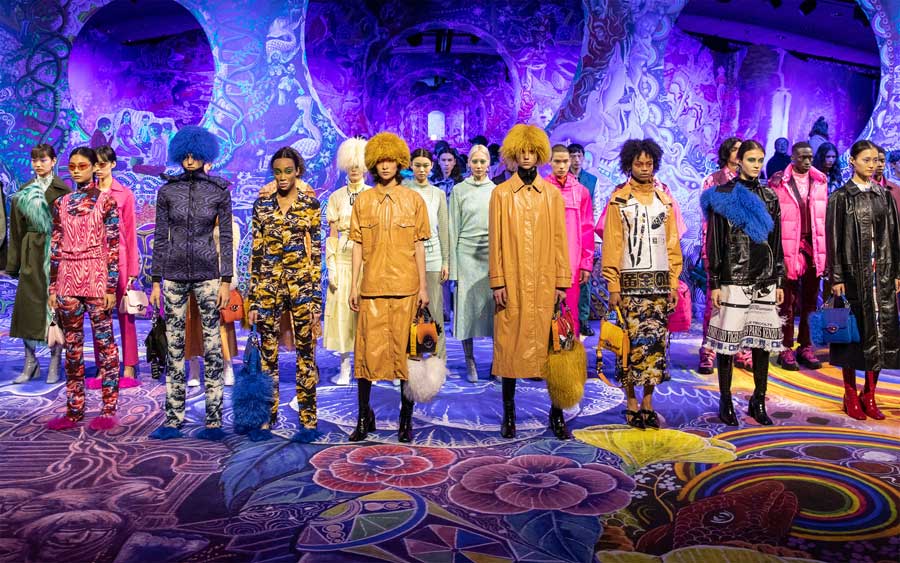in the early days of October 2020, when the world was still in crisis of the Covid-19 pandemic, fashionistas at the same time received bad news, imaginative and creative designer Kenzo Takada passed away.
After a journey of 51 years, Kenzo now owns a position second only to Louis Vuitton in the world’s leading fashion group LVMH, which owns a series of other luxury brands such as Dior, Celine , Givenchy… Over time, the brand’s name has become more and more famous for its rich and new designs, diverse colors, especially the unique and strange patterns printed on the shirt. The designs are distilled and blended by traditional Japanese and elegant European styles that tell us
wonderful stories, about a colorful natural world, adventure and multicultural beauties. , religious nation. And the success story of Kenzo is also the journey of non-stop conquest that Kenzo Takada – the founder of the brand has been painstakingly woven since the early days.
STAR FROM THE East
Born into a traditional family of seven children in Himeji, Japan, Kenzo Takada soon developed a passion for fashion through his sister’s magazines. In 1958, after dropping out of Literature at Kobe University, he became one of the first male students to be accepted into the Bunka Gakuen
School of Design, despite the objections of his parents, who threatened not to support him. give him a penny. Kenzo graduated with distinction. At the age of 24, he realized his fashion dream when he arrived in its own capital – Paris.
In the early days, of course, Kenzo had many difficulties in showing his talent, he did not know anyone, spoke only very limited French and was basically penniless. The first designs were born when he could only buy fabric at the flea market. As a result, he had to combine many different fabrics to create a design. In 1970, success began to smile at Kenzo when he finally opened his first store called Jungle Jap. The name filled with national pride stirred up quite a bit of controversy at the time, enough to provide the Japanese designer with some free advertising for his new fashion line. In the same year, Kenzo presented his first collection, made of Japanese cotton and rags purchased at the Saint-Pierre fabric market at the foothills of Montmatre.
Kenzo’s early designs carried the typical tradition of the land of Funeral, but breathed a modern spirit into it. They become Haiku poetry, Origami, Ikebana flower arrangement in the world of fashion, with impromptu and poetic creations. They twist the traditional rules of design and apparel to create a new charm. They also took the Kenzo name beyond the realm of the “Japanese Forest” and started creating new effects in Kenzo’s flat textures. From the kimono came a revolution in knitwear, short jackets and slacks of the 1980s in a way that couldn’t be faster.
It should be noted that Parisian fashion at the time was dominated by revered couture houses such as Dior and Chanel. Even a well-known Yves Saint Laurent today was once seen as an up-and-coming irreverent. Fashion design must be dignified, aristocratic and aimed only at a “bon chic, bon genre” customer. Shows are held in small salons for a very small number of special guests. “It’s all very institutional and oppressive,” says designer Antonio Marras, one of Kenzo’s former art directors. “Kenzo shows … paved the way for more creative forms of fashion.” With aesthetic gout and a way of working that is far from classic French fashion houses, Takada belongs to Paris’ army of pioneering new talents. With Yves Saint Laurent, Karl Lagerfeld,
Renowned for the clashing colors and eclectic styles of clothing, Kenzo was one of the first fashion labels to take the “ethnic-chic” style to the streets. Takada takes fashion inspiration from all over the world, from Russia to Machu Picchu, Bohemia, and then back to his home country of Japan. He once said, “I just love traveling as an escape from something, not going around looking for influence. Vitality will come naturally after each trip.” Kenzo’s new collections and ideas always represent a continuous and non-stop creative flow. They are never an imposition but the inevitable result of constant exploration. And the culmination of Kenzo discovery is the skillful combination of the diversity of the world’s ethnic groups and cultures.
Kenzo’s fashions are, in essence, about cross-cultural debates. Somewhere in the modern world, there are still religious conflicts, ethnic conflicts, but in Kenzo’s designs, polar opposites still coexist peacefully. It is the utopia of American popular culture, of Chinese military uniforms, of East Asian Batik, of European peasant blues and skirts, or Japanese knitted sweaters. All build up a form of power of Kenzo’s own. He once said: “I feel good when people say I influence. But I am always influenced by the very world that says I am influencing it. In other words, the very world I live in is my influence.” Kenzo’s collections are not as modest as his. It strongly draws the fashion world into the game of textures and impromptu combinations of colors. Over time, Kenzo has become the voice of nature, of cross-cultural confessions, and each of his shows, from New York
to Tokyo through London, is seen as an expression of fashion industry.
In 1999, after 29 years, Kenzo stepped down and handed the reins to the leaders of the world of luxury: LVMH. But the influences and imprint he made will forever be immortalized in the fashion pantheon.
ON THE TOP OF GLORY
Back to the current catwalk, where Kenzo is a brand that is especially sought after and admired around the world. Humberto Leon and Carol Lim have done an excellent job of rekindling the legacy of Kenzo Takada as creative director of Kenzo since 2011. Thanks to their new vision, the brand is reviving the spirit of the brand. god is the source for its success. “We have had the opportunity to work on a number of different projects,” says Lim, “but the Kenzo brand is the most appealing to us. Not just because we’ve been fans of the brand for a long time, but because we wanted to be involved in telling the brand’s story to a whole new generation.”
Before landing on Kenzo’s big show, this California-grown Asian-born designer duo were already well known for their cult following with fans and friends like Jessica Alba and Chloe Sevigny. In 2002, two friends (they met at the University of Berkeley, California) founded the Opening Ceremony concept store in Los Angeles – a multi-story shopping destination in a cubicle building on a precinct. public land at La Cienega on the west side of Hollywood. The boutiques, which now have branches in New York, Tokyo and London, pride themselves on selling the most innovative and inspiring labels in the fashion industry, including both established and emerging brands. . The emphasis here is on fun, and sensory experiences. A room in the building is completely surrounded by Lego blocks, including the ceiling.
Their spontaneity and experience are integral to fashion at the moment. When LVMH approached the duo about joining the Kenzo brand, they looked deeply into the history of the brand. They found that the things that Kenzo Tanaka fought for, like travel, a global mindset, and a positive attitude, were similar to what they wanted to achieve with the opening ceremony. “The brand is modern, the brand is bold. Its founder – Kenzo Takada himself has established a great DNA for it, but for a long time it was hidden under the flowers. We wanted to lift that burden and reintroduce what he originally sought to do.”
Their mission at Kenzo was to instill a true joy of life and impart a new freshness to the brand, while at the same time continuing to surprise and rock the “Fashion Forest”. The legendary Kenzo Takada of the ’70s was known for his brilliance and grandeur, unlimited color layers, and his “Japanese tie” style. The latest designers to work for the label he founded – Humberto and Carol – capture the attention of the crowd with all things fresh and casual like their distinctive pullovers.
Kenzo Fall Winter 2019
Since their debut collection in the Spring/Summer 2012 season, where they have launched an “explosion” of bright geometric patterns with colors and prints that bring an almost life and energy to the world. Having disappeared from the brand since the 1980s, Lim and Leon have aroused countless praises from fashion magazines as well as customers. A sharp intuition about what is “hot” in the cities along with a global approach has allowed Lim and Leon to tap into the aspirational “IT” element of youth. For the 2012 collection, Carol Lim and Humberto Leon presented a patchwork khaki top with “K” petals on the front. Their next collection continued to be the reworked letter K in wool inlay (which was instantly snapped up by all those in the industry with names beginning with this letter), Along with that, the Tiger Head motif sweater has become one of the must-have items of the season. And at the duo’s show in Paris Autumn/Winter 2013, it was a black off-the-shoulder shirt emblazoned with the “devil’s eye” motif, dubbed the “IT knitwear” by the brand.
Kenzo Fall Winter 2019 collection is more unique to Leon and Lim than any previous Collection. Farewell to the image of the roaring tiger, this duo brings the image of “phoenix”; The rainforest motif that has long made Kenzo’s name also disappears in this collection, making way for subtle color-blocking patches with plaid and flower-print motifs appearing frequently in many areas. eye catching set. This is a necessary breakthrough to confirm the name of this talented design duo before bringing Kenzo back to the familiar reel called Memento No. 4 – Takada Kenzo’s long and original design series?
Kenzo Fall Winter 2019
Kenzo’s use of Phoenix – a legendary but unexplored image in designs from Western fashion houses is much appreciated, especially on the background of T-shirts and mantles, which favor monochrome or graphic designs. simple details. The departure from the silhouette of Captain Takada Kenzo has created many surprises about this collection, but it is undeniable that Humberto and Carol Lim are doing well in creating their own identities.
The talent of two young designers is evident through their work at Kenzo beyond the collections, from the commercial success of the clothes they produce, to the staging of the stages. , infectious advertising campaigns and choice of show venues – such as the neon-lit halls of the University of Paris, Pierre and Marie Curie and most recently, the mall Famous commercial and iconic building of the city of La Samaritaine (the first and as promised, also the last time used for fashion show purposes). Lim and Leon’s attention to detail goes to their heart-warming designs behind the scenes. Humberto Leon and Carol Lim wanted to take advantage of all the creative aspects of the world around them. In collaboration with avant-garde artists, musicians, actors, designers and many others, they have brought Paris a unique innovation. They are a fashion message that should be fun. And perhaps amid the stuffiness of old European haute couture, this is their allure.
Kenzo Fall Winter 2021
July 2019, LVMH appoints Felipe Oliveira Baptistainto the position of creative director of Kenzo. Felipe Oliveira Baptista understands that Kenzo has always been a symbol of joy and optimism. The thirst for those emotions is the purest driving force behind his creative process at Kenzo. The Fall Winter 2021 collection is like a memorial that Felipe Oliveira Baptista has for Kenzo Takada, an invitation to the concerns that Kenzo has always cherished. Natural landscapes, rhino horns, birds, necklaces, roses, stripes, orchids, tulips and cocktails… all come together in a colorful fantasy party. Despite having to self-isolate in Paris, isolated between home and work, the designer had to make travel in his own mind. Creativity, therefore, became the outlet for the brand’s own predicament. Creativity is like Kenzo’s new panacea. The magic and beauty of teleportation, a tribute to nomads with a nomadic mind. Fearless wanderers, always optimistic. They run, jump and celebrate in their gorgeous woven ao dai, enjoying the joy and thrill of arriving in a new land.
They yearn for freedom, and that longing is eternal.
Back to the current catwalk, where Kenzo is a brand that is especially sought after and admired around the world. Humberto Leon and Carol Lim have done an excellent job of rekindling the legacy of Kenzo Takada as creative director of Kenzo since 2011. Thanks to their new vision, the brand is reviving the spirit of the brand. god is the source for its success. “We have had the opportunity to work on a number of different projects,” says Lim, “but the Kenzo brand is the most appealing to us. Not just because we’ve been fans of the brand for a long time, but because we wanted to be involved in telling the brand’s story to a whole new generation.”
Before landing on Kenzo’s big show, this California-grown Asian-born designer duo were already well known for their cult following with fans and friends like Jessica Alba and Chloe Sevigny. In 2002, two friends (they met at the University of Berkeley, California) founded the Opening Ceremony concept store in Los Angeles – a multi-story shopping destination in a cubicle building on a precinct. public land at La Cienega on the west side of Hollywood. The boutiques, which now have branches in New York, Tokyo and London, pride themselves on selling the most innovative and inspiring labels in the fashion industry, including both established and emerging brands. . The emphasis here is on fun, and sensory experiences. A room in the building is completely surrounded by Lego blocks, including the ceiling.


